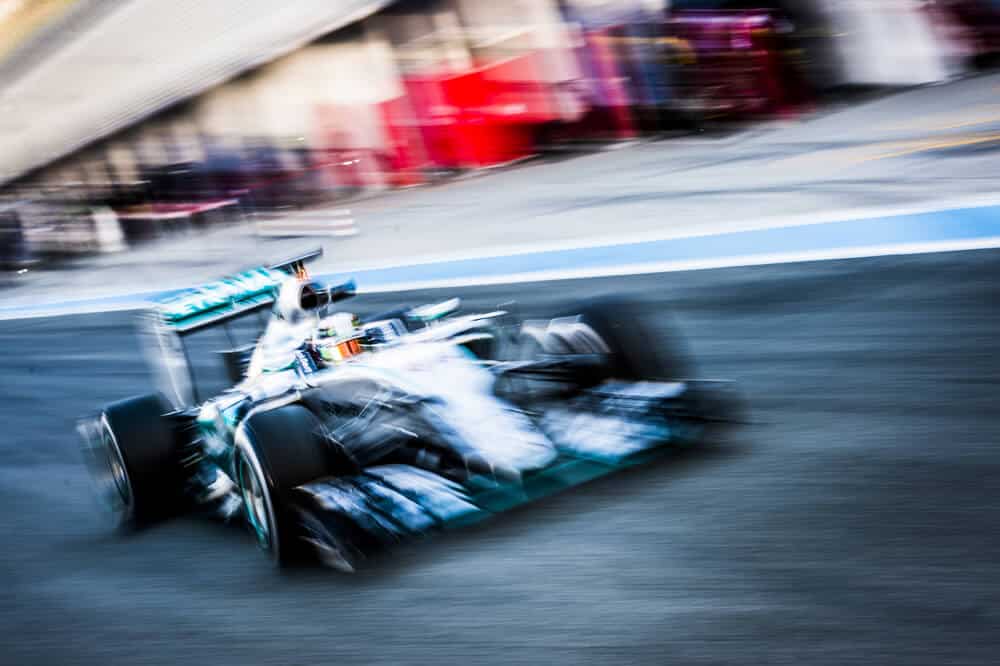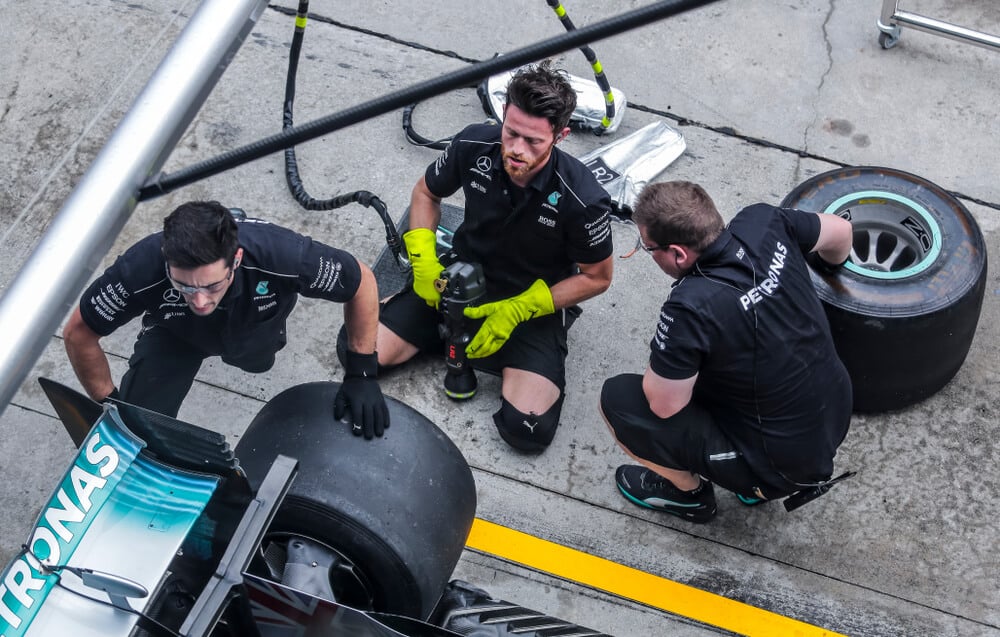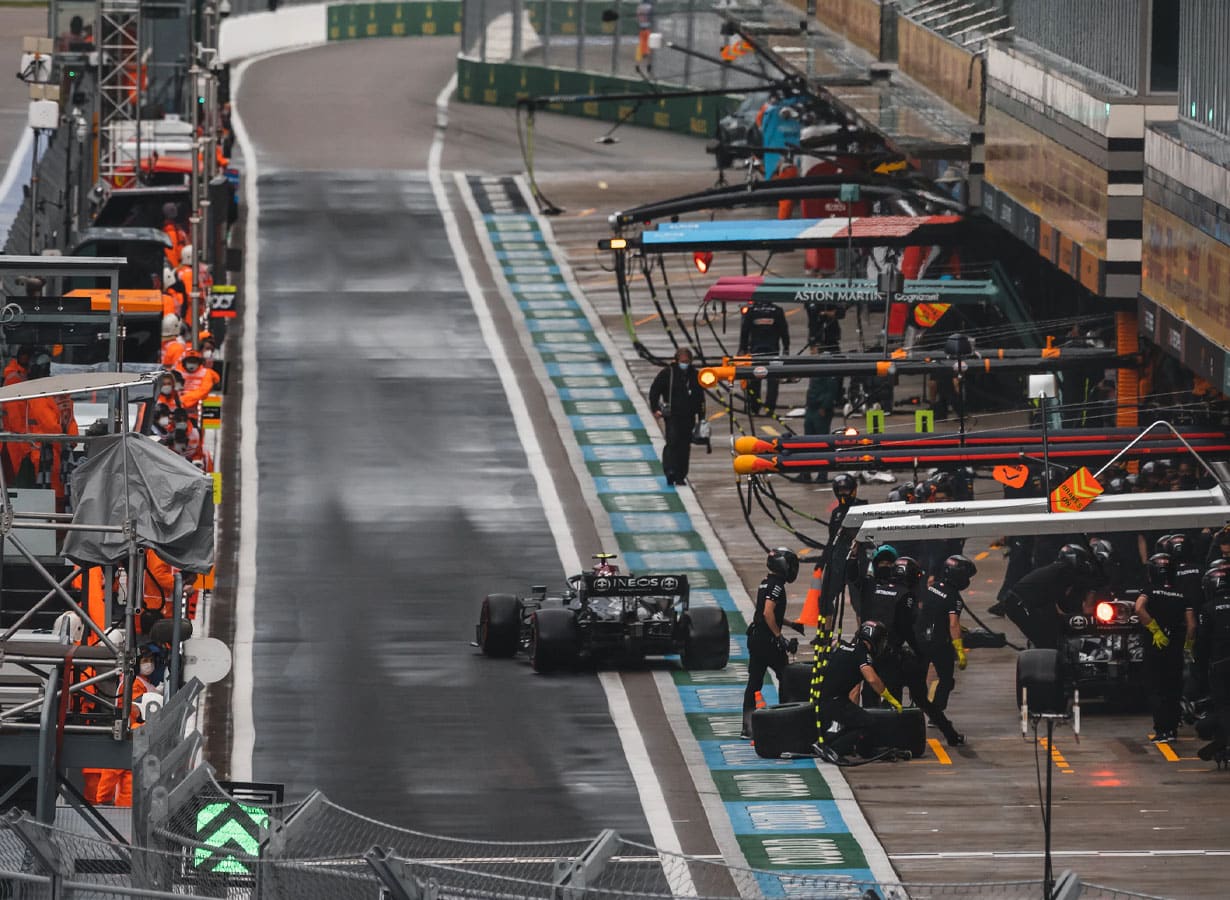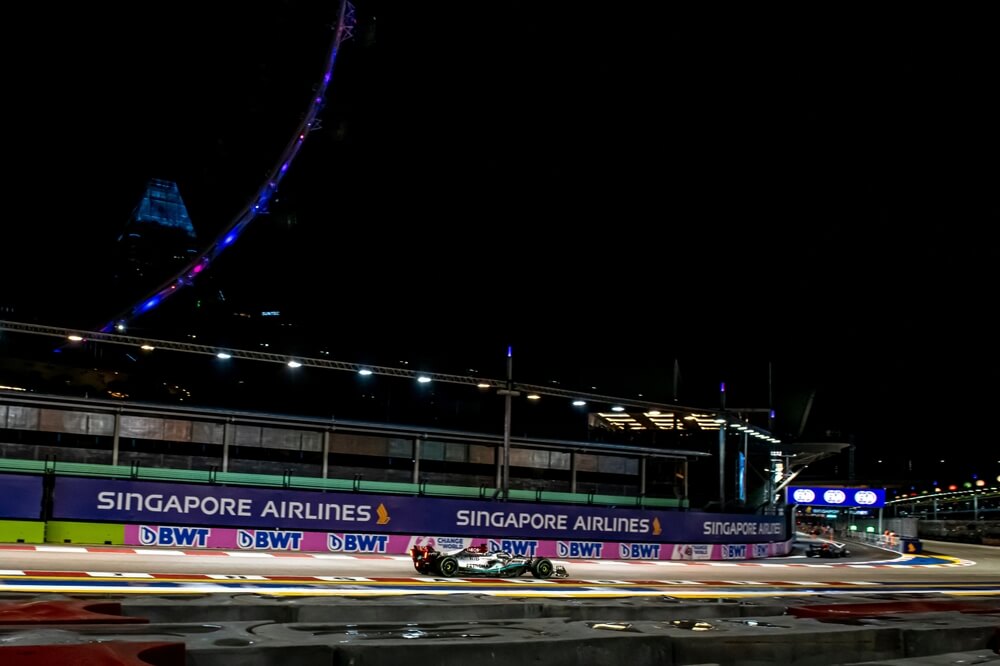One of the highlights of each F1 racing weekend is qualifying. The drivers’ focus on achieving the best possible lap time necessitates meticulous attention to detail at every turn of the car’s preparation process. However, you may frequently hear the terms flying lap and hot lap and be confused as to what they actually represent.
Table of Contents
Watch this video to learn more about flying laps in F1.
What is a Flying Lap in F1?
In Formula One, a driver’s fastest qualifying lap times are called “flying laps.” When a driver crosses the starting line for the first time, a flying lap clock begins and stops when he or she crosses the line for the second time. They typically follow out laps and are preceded by cooling laps.
Key takeaways
- In Formula One, a qualifying “flying lap” is the driver’s fastest lap in terms of both time and distance.
- It goes by a few other names, including “hot lap” and “timed lap.”
- During qualifying, drivers will put in many quick laps.
- There are a lot of factors in determining the optimal flying lap.
- It is critical that the car be prepared for the trip with new tires, low gas, and no extra weight.
- Additional crucial elements include track conditions, expected traffic, and driver skill.

Understanding Flying Lap
Having a fast flying lap is a major aspect in determining how well a driver goes in qualifying.
A flying lap in Formula One is a lap driven at maximum speed in an effort to set a personal best time, typically during qualifying. It can’t be set until the driver has made an out lap from the pits. After leaving their garage, drivers must break the timing beam at the start/finish line and may not attempt to set a flying lap on the same circuit.
In contrast to the out lap and in lap, a flying lap is any other lap completed. But if they make a mistake or get stuck in traffic, drivers have the option of leaving the vehicle.
Is a flying lap the same as a hot lap?
When a driver completes an entire lap of the track during practice or qualifying, it is called a flying lap, sometimes also called a “hot lap” or “timed lap.”
Different from a warm-up or cool-down lap, during which a driver aims to get his car into peak condition for an upcoming flying lap, a driver’s focus during a flying lap is on setting a fast time.
Perfecting a flying lap depends heavily on the track conditions. In order to maintain tire traction, drivers will strive to avoid any muddy or dusty sections of the track. They also need to stay away from the track's damaged or less gripping areas. When grip decreases, lap times inevitably rise
Flying lap vs cooldown lap
The cooldown lap might be an individual lap, or it can be sandwiched in between two flying circuits. After drivers have completed their fast qualifying laps, they will repeat the lap at a considerably slower speed in order to complete their qualifying lap. This lets the engine cool down, which prolongs its lifespan, and prevents the car from running out of gas or wearing out the tires too quickly, both of which are problems if the vehicle is used again.
Flying lap vs drive out
Drive out refers to the process of leaving the pit lane, while a flying lap is the quickest lap. The first lap completed after getting out of the pit is known as an out lap.
Preparing for a flying lap
The free practice sessions are used by the teams to get their Formula One vehicles tuned and ready for fast laps. This ensures that the vehicle is optimized for both the track and the driver. As a result of having a light load of fuel and new tires, the automobile will be ready to turn in fast laps.
The first thing drivers will do is their “out lap,” or the lap they run after exiting the garage. The driver will be executing a variety of tasks in the roughly two minutes leading up to their key flying lap, including the out lap.
To begin with, the driver will be travelling at a significantly slower pace than usual. By conserving the life of the tires, the driver can maintain the traction necessary to achieve the best possible lap time. It’s common practice to use as little gas as possible in order to reduce the car’s weight, and this helps it save money at the pump.
On their out lap, the driver will also be keeping a close watch on the road conditions, looking for any debris, mud, or even damp patches on the racing track that could cause them to lose grip and destroy their lap time. Also, drivers will have to control the distance between their automobile and the one in front of them to avoid hitting any slower vehicles.
After completing their out lap, the drivers will increase their speed to warm up their tires. Drivers need to spend their practice time perfecting the art of maintaining the optimal tire temperature range, which is essential for maximising grip but notoriously difficult to achieve.
Perfect flying lap
Any professional race car driver will tell you that there is no such thing as a flawless lap. There have been several drivers who have come close to completing a flawless flying lap, but no one has ever done it, and it’s highly improbable that anyone ever will. A Formula 1 driver’s hot lap may look flawless from the stands, but there will always be things the driver can do better looking back.
Great tires
When compared to older tires, the lifespan of today’s Pirelli’s is shockingly low. Due to their extreme fragility, these tires often overheat after just one lap of racing. At the end of the lap, when the tires have overheated and the driver has less grip, we often see the cars sliding around.
The harder the driver presses on the gas, the harder the tires must struggle to keep up with the vehicle. The tires will get hot much more quickly than usual due to the increased friction. The tires do improve their grip as they warm up. However, this traction is temporary, lasting only until the tires get too hot and start to wear out.
Low fuel weight
A slow moving object that is overloaded with weight will slow down quickly. A Formula 1 vehicle’s lap time decreases in direct proportion to its weight. Because of its high levels of downforce in the bends, a Formula 1 car’s true strength is in its agility, which will suffer if extra weight is added to the vehicle.
In order to save weight, Formula One teams will run their vehicles on minimal fuel during flying laps.
No traffic
For any Formula One driver, nothing is more frustrating than getting stuck in traffic when out on a lap. While Formula 1 traffic may not be as slow as that on a typical commute, it is nevertheless extremely frustrating for a driver who is trying to record a personal best lap time. The term “traffic” is used to describe the presence of other Formula 1 vehicles on the track ahead of a certain vehicle.
As a safety precaution, the blue flag regulation instructs slower drivers to make way for faster ones, protecting “flying lap” racers from collisions. While blue flags are effective in the vast majority of situations, there are always those unfortunate few who either fail to move their vehicles in time or who park in the middle of the track in preparation for a lap.
Track conditions
Perfecting a flying lap depends heavily on the track conditions. In order to maintain tire traction, drivers will strive to avoid any muddy or dusty sections of the track. They also need to stay away from the track’s damaged or less gripping areas. When grip decreases, lap times inevitably rise.
In a single session, the track can undergo dramatic variations. Especially in the qualifying round, track growth is crucial. In many cases, the last driver to set a lap time winds up being the fastest, even if they don’t have the fastest car. This is probably because of the development of the track.
Frequently asked questions about Flying Lap
What is a flying lap in Formula 1?
Is a flying lap the quickest lap a F1 driver can do?
How many flying laps does a driver get in Formula 1?
Conclusion
Drivers in Formula One will occasionally set what are called “flying laps,” their quickest possible lap times. The qualifying lap times are what will be used to decide the driver’s starting position on the grid. In order to achieve the best possible time during flying laps, drivers must have their vehicles in tip-top shape.
Article sources
- https://flowracers.com/blog/f1-flying-lap/
- https://thesportsgrail.com/explained-what-is-a-qualifying-flying-lap-in-f1-meaning-and-importance-for-drivers/
- https://www.mclaren.com/racing/f1-playbook/flying-lap/#:~:text=A%20flying%20lap%20%E2%80%93%
- https://www-hitc-com.cdn.ampproject.org/v/s/www.hitc.com/en-gb/2022/05/07/f1-flying-lap/?amp=&_gsa=1&_js_v=a9&usqp=mq331AQKKAFQArABIIACAw%3D%3D#amp_tf=From%20%251%24s&aoh=16731101098517&referrer=https%3A%2F%2Fwww.google.com&share=https%3A%2F%2Fwww.hitc.com%2Fen-gb%2F2022%2F05%2F07%2Ff1-flying-lap%2F
- https://thesportsrush-com.cdn.ampproject.org/v/s/thesportsrush.com/f1-news-f1-out-lap-what-does-out-lap-means-in-formula-1/?amp=&_gsa=1&_js_v=a9&usqp=mq331AQKKAFQArABIIACAw%3D%3D#amp_tf=From%20%251%24s&aoh=16731101098517&referrer=https%3A%2F%2Fwww.google.com&share=https%3A%2F%2Fthesportsrush.com%2Ff1-news-f1-out-lap-what-does-out-lap-means-in-formula-1%2F
Learn more about Formula One
Want to learn more about F1? Then visit our Formula 1 glossary and dictionary.



